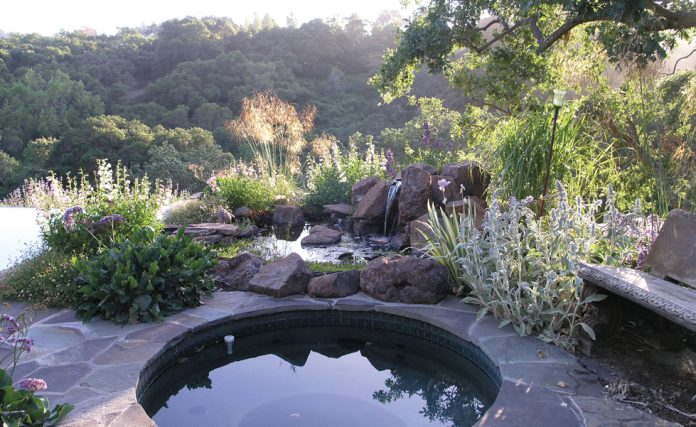I’ve yet to come across a client who doesn’t want ornamental grasses in their garden. Well, everybody except my friend, Sue, who is allergic and was not a happy camper earlier in the summer.
It’s hard to top the dramatic sight of an ornamental grass backlit by late afternoon sun. They seem to come alive as their tawny flower spikes glow and sway in the breeze. Their gentle movement and soft whispering sounds can bring your garden to life as few other plants do.
Most grasses require little care, minimal fertilizer, only occasional grooming and just enough water to meet their needs. Diseases and insect pests are rarely found on grasses. They have succeeded because of their adaptability and have evolved to suit almost every environment and climate on earth. True grasses generally have extensive root systems, which help control erosion. A garden just isn’t complete without the architectural qualities they provide.
There’s an ornamental grass for every type of garden. Whether you are striving to create the perfect perennial border or have a hot dry slope, grasses can work in harmony wherever you place them. There are some that are made for the shade, some that are perfect additions to a small water feature and many that are invaluable in container gardening.
Grasses are distinguished from other plant families by their growth habit. They grow upward from the base of a leaf or shoot and can regrow from the crown when cut back. There are other grasslike plants that resemble grasses in their growth habits and are often some of the best companions for interplanting with grasses. These include New Zealand flax, carex family sedges, libertia, chondropetalum, kangaroo paw, lomandra, dianella, cordyline and liriope, to name just a few.
Are sections of your garden hot and dry? Grasses are survivors and are good choices for sunny spots that get little irrigation. Good drainage is a must for these plants so amend the soil with plenty of organic matter before planting. Combine drought tolerant grasses like Mendocino Reed Grass (pennisetum foliosa) with companion plants and a few accent rocks to complete your dry theme. Good combinations for these areas are Pheasant Tail Grass with the sky blue flowers of Russian sage. If you like blue foliage, try Elijah Blue fescue grass with Amazing Red flax for a show stopping combination.
If you are trying to create a focal point or destination in your garden and think the texture, light and movement of a grass would be perfect, look to the taller varieties. A personal favorite is Stipa gigantea or Giant Feather Grass. They take drought conditions once established but also will grow with regular garden watering. The beautiful flower spikes are good in dried arrangements. Giant Feather grass looks great with the purple flowers of penstemon “Midnight.”
There’s a reason old favorites like Karl Foerster feather reed grass are so popular in landscapes. It doesn’t get too tall or overpowering in the smaller garden and its upright habit is neat and tidy. Pheasant Tail grass is another popular grass that is carefree and long-lived. It grows to only 3-by-3 feet, is not fussy about soil and looks good anywhere you plant it. It combines beautifully with the sky blue flowers of Russian sage and is extremely drought tolerant once established.
Caring for grasses is easy. As a rule of thumb, if it browns in winter then cut it back before new growth starts. If it’s evergreen by nature, just clean up the outside leaves. Most like well-drained soil and are tolerant of a wide range of garden conditions. You shouldn’t fertilize heavily because an excess of nitrogen can lead to lush, soft growth that tends to flop. Mulching with 2 inches of compost yearly will keep the soil and your plants in good shape.
Water grasses regularly during their first year to help get a good root system established. Even grasses that are normally touted as drought-tolerant require a season or two to become fully established.
Jan Nelson, a landscape designer and California-certified nursery professional, will answer questions about gardening in the Santa Cruz Mountains. Email her at ja******@*ol.com, or visit jannelsonlandscapedesign.com.












